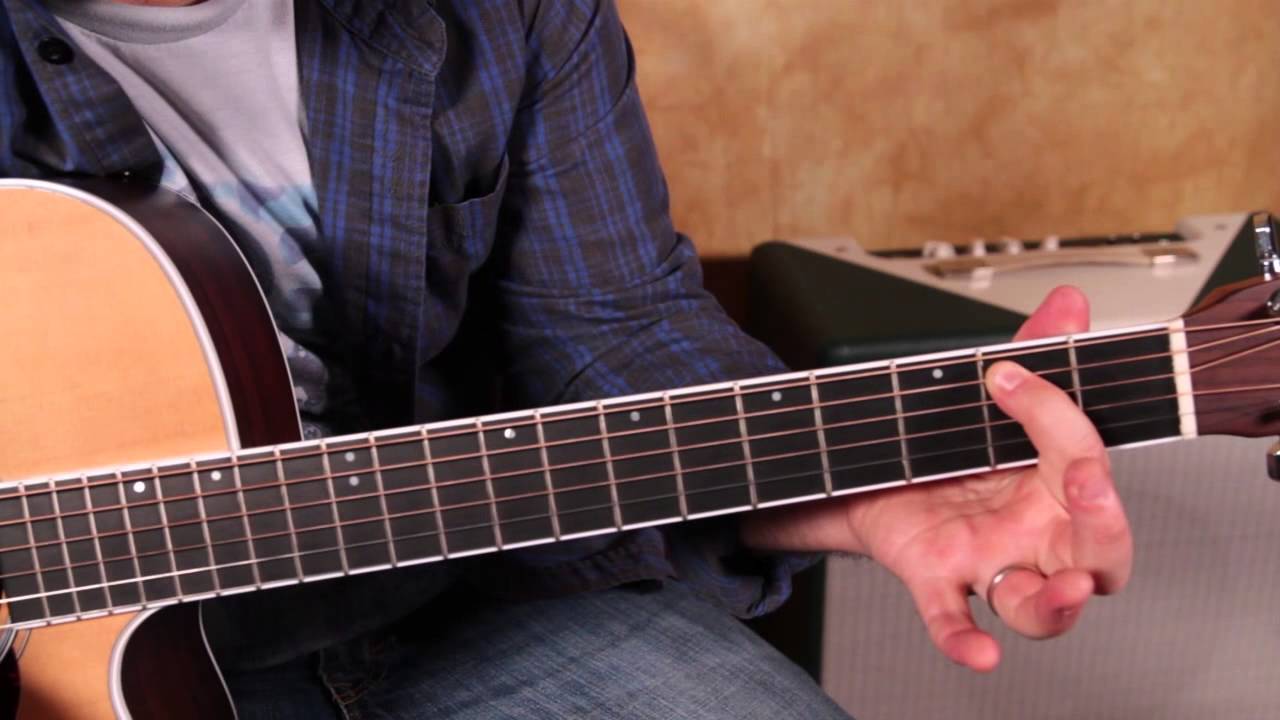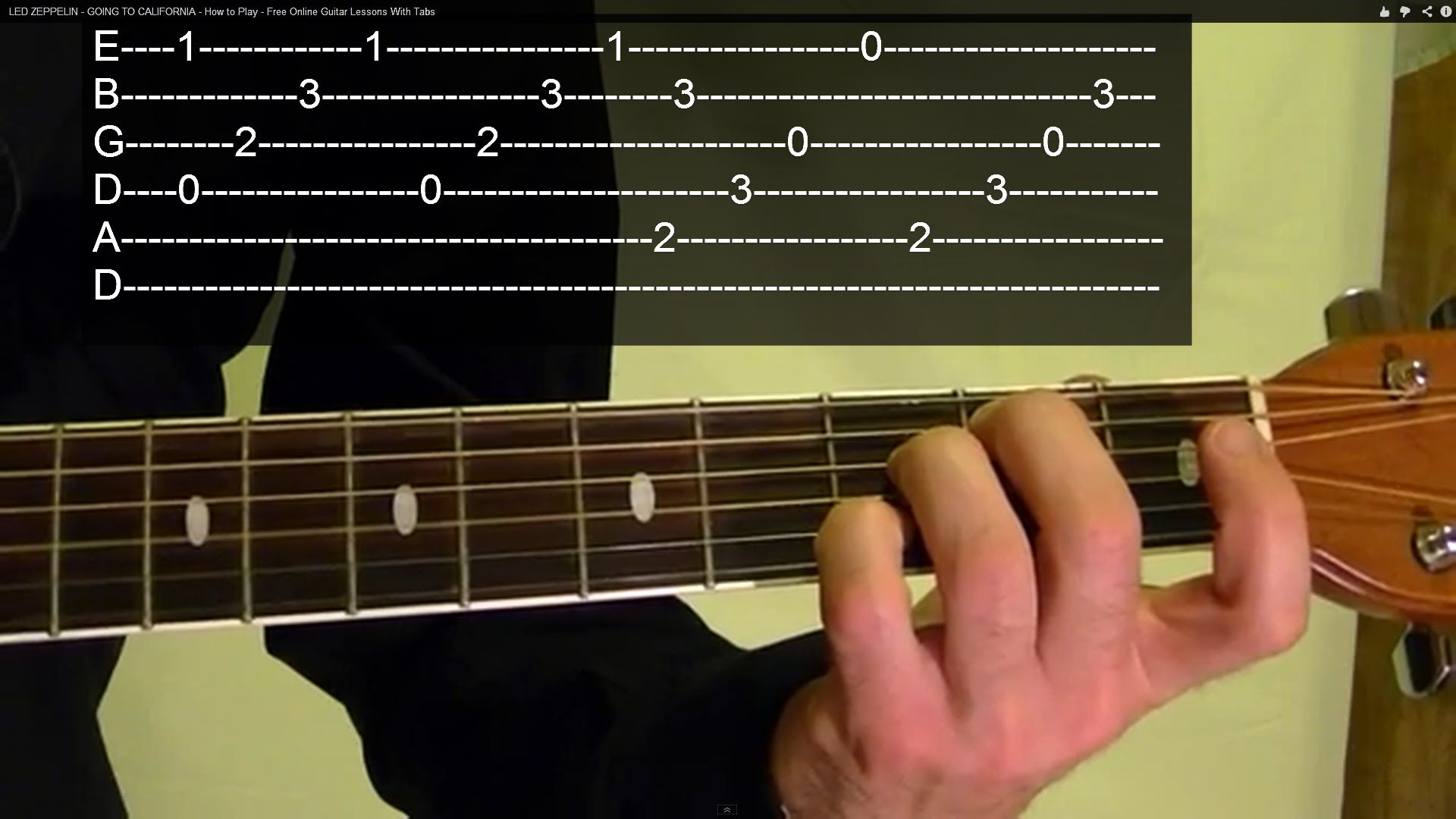Introduction
Strumming an acoustic guitar is a fundamental skill that every guitarist should master. It is the rhythmic element that brings life to your playing, allowing you to accompany songs, create grooves, and express yourself musically. Whether you’re a beginner or an experienced player looking to improve your technique, this guide will provide you with essential tips and exercises to enhance your strumming abilities.
Learning how to strum an acoustic guitar involves more than just randomly plucking the strings. It requires proper technique, an understanding of rhythm, and the ability to create different strumming patterns. With practice and dedication, you’ll be able to add dynamics and precision to your strumming, taking your playing to the next level.
In this article, we’ll take a step-by-step approach to strumming an acoustic guitar. We’ll begin by discussing the correct way to hold your guitar, which is essential for achieving comfort and stability. Then, we’ll dive into the basic strumming technique, focusing on how to properly use your strumming hand and fingers.
Understanding rhythm is crucial for effective strumming. We’ll explore different time signatures, note durations, and how they relate to strumming patterns. You’ll learn about downward strumming patterns, where the pick or your fingers move down across the strings, and upward strumming patterns, where the pick or your fingers move up across the strings.
Combining downward and upward strumming patterns will allow you to create more intricate and varied rhythms. We’ll delve into combination strumming patterns, providing you with examples to practice and master.
Adding dynamics to your strumming will make your playing more expressive and engaging. We’ll cover techniques such as accenting certain beats, palm muting, and varying the intensity of your strums.
It’s common for beginners to encounter challenges and make mistakes when first learning to strum. We’ll address some of the most common strumming mistakes and provide tips on how to overcome them.
To improve your strumming skills, we’ll conclude with a series of strumming exercises that you can practice regularly. These exercises will develop your coordination, control, and fluency when strumming.
So grab your acoustic guitar, get ready to strum, and let’s dive into the world of rhythmic guitar playing!
Holding the Guitar
Before you start strumming, it’s essential to hold the guitar correctly to ensure comfort and optimal playability. Here are some key points to keep in mind:
- Position the guitar: Sit in a comfortable chair with a straight back. Rest the bottom curve of the guitar on your right thigh if you’re right-handed (or left thigh if you’re left-handed). Hold the guitar against your body, ensuring it is stable and doesn’t slip.
- Support the neck: Use your left hand to support the neck of the guitar. Place your thumb behind the neck and curve your fingers over the fretboard. This will allow you to easily reach the strings and play chords.
- Avoid excessive pressure: While it’s important to have a firm grip on the guitar, avoid applying too much pressure with your left hand. This can cause unnecessary tension and make it difficult to transition between chords smoothly.
- Sit up straight: Maintain good posture while playing the guitar. Sit with your back straight, shoulders relaxed, and feet flat on the floor. This will help prevent strain on your back and enhance your overall playing experience.
Proper positioning and support are essential for comfortable and effective strumming. Take the time to find a position that feels natural and allows you to move your strumming hand freely across the strings without any restrictions.
It’s worth mentioning that as you progress in your guitar playing journey, you may discover variations in how guitarists hold their instruments. The key is to find a position that works best for you and allows you to play with ease and confidence.
Basic Strumming Technique
Once you have a solid foundation in holding the guitar, it’s time to focus on the basic strumming technique. This technique forms the building blocks for more advanced strumming patterns and rhythmic variations.
Here are the steps to develop a good basic strumming technique:
- Hold the pick: If you’re using a pick, hold it between your thumb and index finger. Allow a small portion of the pick to extend past your fingers to strike the strings.
- Relaxed wrist: Keep your wrist relaxed and loose. It should have a slight bend to it, allowing for more fluid motion when strumming.
- Strumming motion: Start by strumming downward across the strings. Keep the motion fluid and consistent, using your wrist to generate the movement. Aim to strike all the strings evenly.
- Even pressure: Apply consistent pressure to the pick when strumming. Avoid hitting the strings too hard, as it can lead to unwanted noise, or too lightly, resulting in a weak and muted sound.
- Practice precision: As you strum, pay attention to the sound and clarity of each strum. Strive for precision and accuracy by focusing on hitting the right strings and avoiding accidental hits on adjacent strings.
It’s important to start with a slow tempo and gradually increase the speed as you become more comfortable. This will help you develop control and accuracy in your strumming.
Remember, strumming is not just about moving your hand up and down. It’s about creating rhythm and adding a musical feel to your playing. Listen carefully to the sound produced by your strumming and strive for a consistent and pleasing rhythm.
Experiment with different strumming patterns and speeds to develop versatility in your playing. The basic strumming technique serves as a foundation upon which you can build more complex patterns and explore different styles of music.
By practicing the basic strumming technique regularly, you’ll develop a solid foundation and the confidence to explore more advanced techniques and create your own unique strumming style.
Understanding Rhythm
Understanding rhythm is crucial for effective strumming. It allows you to create a consistent and groove-based feel when playing the guitar. Without a solid sense of rhythm, your strumming patterns may sound disjointed or lack the desired musicality.
Here are a few key concepts to help you better understand rhythm:
- Time signatures: Time signatures dictate the rhythm and structure of a piece of music. The most common time signature in popular music is 4/4, meaning there are four beats in a measure and the quarter note gets one beat. Other common time signatures include 3/4 (waltz time) and 6/8 (compound time).
- Note durations: Notes have different durations, which determine their length within a musical phrase. The most basic note duration is the quarter note, followed by the eighth note, sixteenth note, and so on. By understanding note durations, you can create rhythmic patterns and accents within your strumming.
- Strumming patterns: Strumming patterns are a sequence of downstrokes and upstrokes that define the rhythm of a song. They can vary in complexity and speed, and each pattern enhances the musicality of the piece. Experiment with different patterns to find ones that complement the song you’re playing.
To develop your sense of rhythm, it’s essential to listen to a wide variety of music and pay attention to the rhythm section. Focus on recognizing the beat, counting along with the music, and identifying the underlying rhythm patterns.
Practicing with a metronome is another effective way to improve your rhythm skills. Start by playing simple strumming patterns along with the metronome, gradually increasing the tempo as you become more comfortable. This will help you develop a steady sense of timing and improve your ability to stay in sync with other musicians.
As you become more adept at understanding rhythm, you can experiment with syncopation, accents, and different strumming subdivisions to add depth and complexity to your playing. This will elevate your strumming from a mere accompaniment to a rhythmic masterpiece.
Remember, rhythm is the heartbeat of music. Developing a solid sense of rhythm will not only improve your strumming technique but also enhance your overall musicality and ability to connect with the music you’re playing.
Downward Strumming Patterns
Downward strumming patterns are the foundation of many guitar songs and provide a strong rhythmic drive. Mastering these patterns will allow you to create a solid groove and accompany various styles of music. Here are some common downward strumming patterns to practice:
- Quarter Note Strums: This is the most basic downward strumming pattern. It involves strumming down on each quarter note, typically on beats 1, 2, 3, and 4 in a 4/4 time signature. Start by counting the beats aloud or using a metronome, and make sure you’re hitting all the strings evenly.
- Eighth Note Strums: In this pattern, you strum on each eighth note, effectively doubling the strumming speed. This creates a more energetic and lively rhythm. Count “1 and 2 and 3 and 4 and” as you strum down on each beat and the “and” in between.
- Upbeat Strums: Upbeat strums add a syncopated feel to your playing. Instead of strumming down on the beat, you strum up on the “and” between beats. This creates a catchy offbeat rhythm. Practice combining downward quarter note or eighth note strums with upbeat strums to add variation and create interesting rhythm patterns.
- Strumming Patterns with Rests: Rests are pauses in the strumming pattern, where you intentionally don’t strum. They add dynamics and emphasize certain beats. Experiment with inserting rests within your downward strumming patterns to create rhythmic variety and a more interesting overall sound.
- Accent Strums: Accent strums involve strumming with slightly more force to emphasize certain beats. Adding accents to your downward strumming patterns creates a more dynamic and expressive sound. Experiment with accenting beats 2 and 4 to create a strong backbeat or accenting specific beats to add your own creative flair.
When practicing these downward strumming patterns, focus on maintaining a steady tempo, hitting all the strings evenly, and keeping the rhythm tight. Start at a slower tempo and gradually increase the speed as you become more confident.
Remember to stay relaxed and let your wrist do most of the work. Don’t tense up your arm or hand, as this can hinder your strumming motion and technique.
Listening to songs that use downward strumming patterns is an excellent way to learn and internalize different rhythms. Pay attention to the strumming patterns in your favorite songs and try to replicate them on your guitar.
With practice and dedication, you’ll become comfortable with these downward strumming patterns, allowing you to strum through your favorite songs and create your own musical magic.
Upward Strumming Patterns
Upward strumming patterns add a different dimension to your guitar playing, providing a contrasting texture and rhythmic variation. They are commonly used in various musical genres, including folk, reggae, and funk. Here are some upward strumming patterns to incorporate into your repertoire:
- Eighth Note Upstrokes: In this pattern, you strum up on each eighth note, playing on the “and” between beats. This creates an upbeat and lively feel. Practice counting “1 and 2 and 3 and 4” as you strum up on each “and”.
- Upbeat Strums: Upbeat strums are the opposite of the downward upbeat strums mentioned earlier. Instead of strumming down on the beat, you strum up on the beat and down on the “and” between beats. This technique adds a unique bounce to your playing and creates rhythmic interest.
- Offbeat Skank: The offbeat skank pattern is common in reggae music. It involves strumming up on the “and” between beats 2 and 4 in a 4/4 time signature, while muting the strings with the palm of your hand. This creates a percussive, staccato sound that defines the reggae rhythm.
- Syncopated Upstrokes: Syncopation is a technique that emphasizes the weak or offbeat parts of the rhythm. Experiment with strumming up on the “and” or “e” between beats to create syncopated rhythms. This adds complexity and musical tension to your playing.
- Combining Upstrokes and Downstrokes: Once you feel comfortable with downward and upward strumming patterns individually, start combining them to create intricate rhythm patterns. For example, you can strum down on the beat and up on the “and” to create a continuous flow of strums.
When practicing upward strumming patterns, pay attention to your hand and pick movement. Keep your wrist relaxed and focus on generating the upstroke motion from your wrist and forearm. It’s also important to maintain a consistent tempo and hit all the strings evenly, just like with downward strumming.
Listening to songs that use upward strumming patterns is a great way to familiarize yourself with different rhythmic styles. Pay attention to the strumming techniques used in various genres and try incorporating them into your own playing.
Remember, upward strumming patterns provide a fresh and exciting dimension to your guitar playing. By mastering these patterns, you’ll have a wider range of rhythmic tools to express yourself musically.
Combination Strumming Patterns
Combination strumming patterns involve a combination of downward and upward strums, creating intricate and varied rhythms. These patterns add complexity and musicality to your playing, allowing you to accentuate certain beats and create unique grooves. Here are some commonly used combination strumming patterns:
- Down-Up Strums: Start by strumming down on the beat and then immediately strum up on the “and” between beats. This creates a continuous and flowing rhythm. Practice this pattern slowly at first, focusing on transitioning smoothly between the down and upstrokes.
- Syncopated Patterns: Experiment with syncopated rhythms by combining upward and downward strums on offbeat or weak parts of the beat. For example, you can strum down on the beat and up on the “e” or “a” between beats. This creates a syncopated and groove-based feel in your playing.
- Arpeggio Patterns: Instead of strumming all the strings simultaneously, try arpeggiating the chords by playing the notes individually from low to high or high to low. This creates a cascading effect and adds a melodic quality to your strumming.
- Staccato Patterns: Use short, controlled strums for a staccato effect. In staccato patterns, you strum or pick the strings briefly and then immediately stop the sound by muting the strings. This creates a rhythmic punch and adds emphasis to certain beats.
- Strumming Patterns with Rests: Insert rests, or pauses, within your strumming pattern to create a sense of dynamics and space in your playing. Rests can be used to emphasize specific beats or create a rhythmic pause before a chord change or strumming accent.
When practicing combination strumming patterns, start slowly and gradually increase the speed as you become more comfortable. Focus on maintaining a steady tempo, hitting all the strings evenly, and ensuring a smooth transition between different strumming techniques.
Listening to songs that incorporate combination strumming patterns is a great way to study and internalize various rhythmic styles. Pay attention to the strumming patterns used in different genres and try to recreate them on your guitar.
By incorporating combination strumming patterns into your playing, you’ll be able to add complexity, groove, and unique rhythmic elements to your music. These patterns allow you to showcase your creativity and create a distinct sound that sets you apart as a guitarist.
Adding Dynamics to Your Strumming
Adding dynamics to your strumming can elevate your playing from monotonous to expressive and engaging. Dynamics refer to the variations in volume and intensity that you incorporate into your strumming patterns. By applying dynamics, you can create a more dynamic and compelling musical experience. Here are some techniques to add dynamics to your strumming:
- Accents: Accents involve emphasizing certain beats within your strumming pattern by strumming with slightly more force. By accenting beats 2 and 4, commonly referred to as the backbeat, you can create a more pronounced rhythm and drive.
- Palm Muting: Palm muting involves touching the strings lightly with the palm of your strumming hand as you strum. This technique adds a muted and percussive quality to your strumming, allowing you to control the sustain and create a rhythmic punch.
- Swells: Swells are gradual increases in volume while strumming. Start softly and gradually increase the intensity of your strumming, creating a rise in volume. Swells are particularly effective for creating dynamic build-ups and adding emotional impact to your playing.
- Strumming Dynamics: Varying the intensity of your strumming can create more texture and emotion in your playing. Experiment with strumming softly for a gentle, intimate sound, and strumming with more force for a powerful and energetic sound. This technique adds depth and expression to your music.
- Strumming Patterns with Crescendos and Decrescendos: Incorporate gradual increases (crescendos) or decreases (decrescendos) in volume within your strumming patterns. This helps to build tension or create a sense of release in your playing. Think of it as telling a story through your strumming technique.
When applying dynamics to your strumming, it’s important to maintain control and precision. Practice each technique separately and gradually integrate them into your playing. Focus on achieving a balance between the dynamics and the overall rhythm of the song.
Listening to the music of different artists and paying attention to their use of dynamics can inspire you to explore different techniques and incorporate them into your own playing style. Study how guitarists in different genres use dynamics to create a memorable and captivating performance.
Remember, dynamics are an essential part of musical expression. By mastering the art of adding dynamics to your strumming, you can bring your playing to life and create a more engaging and impactful musical experience.
Common Strumming Mistakes and How to Fix Them
When learning to strum the guitar, it is common to encounter certain challenges and make mistakes along the way. However, recognizing these mistakes and knowing how to correct them can greatly improve your strumming technique. Here are some common strumming mistakes and tips on how to fix them:
- Strumming Too Hard: One common mistake is strumming with excessive force, resulting in a harsh and overpowering sound. To fix this, practice strumming with a lighter touch. Focus on achieving a balanced and controlled sound by using just enough energy to produce a clear tone.
- Inconsistent Strumming: Inconsistency in your strumming pattern, such as unevenly hitting the strings or skipping beats, can disrupt the flow of your playing. To address this, practice your strumming pattern with a metronome or drum backing track to ensure steady timing. Pay attention to hitting all the strings evenly and maintaining a consistent rhythm throughout.
- Strumming Too Fast or Too Slow: Another mistake is strumming at an inconsistent tempo. To overcome this, start by practicing at a slower tempo and focus on playing accurately and in time. Gradually increase the speed as you become comfortable. Maintaining a steady tempo is essential for good strumming technique.
- Tense Strumming Hand: Tension in the hand and arm can hinder your strumming technique and result in a stiff and unnatural sound. Work on keeping your strumming hand relaxed and loose. Pay attention to any unnecessary tension and consciously release it. Relaxing your hand allows for a more fluid and effortless strumming motion.
- Not Muting Unwanted Strings: Unintended string noise can occur when you accidentally strum or hit strings that should remain muted. To mitigate this, practice muting techniques such as palm muting or using your fretting hand to mute unused strings. This helps to maintain a clean and focused sound during strumming.
Remember, the key to overcoming these strumming mistakes is practice and awareness. Take the time to focus on each specific issue and work on it diligently. Recording yourself while practicing can also be helpful, as you can listen back and identify areas for improvement.
Seeking guidance from a guitar instructor or watching video tutorials demonstrating proper strumming technique can provide valuable insights and help you correct any mistakes. Remember to be patient and persistent, as developing solid strumming skills takes time and dedication.
By addressing these common strumming mistakes and implementing the necessary adjustments, you’ll be well on your way to becoming a more proficient and confident strummer.
Strumming Exercises to Improve Your Skills
To enhance your strumming technique and become a more proficient guitarist, practicing specific exercises can significantly improve your skills. These exercises focus on different aspects of strumming, including rhythm, coordination, and dynamics. Here are some exercises to incorporate into your practice routine:
- Metronome Practice: Set a metronome to a slow tempo and practice strumming along with it, focusing on maintaining a steady rhythm. Start with simple patterns and gradually increase the complexity as you become comfortable. This exercise helps develop your sense of timing and improves your ability to stay in sync with other musicians.
- Downstroke and Upstroke Isolation: Practice isolating your downstrokes and upstrokes separately. Start by strumming only downward with a basic rhythm pattern, and then switch to strumming only upward. This exercise helps improve coordination and control between your strumming hand and the guitar strings.
- Strumming Accents: Create a simple strumming pattern and incorporate accents on specific beats within the pattern. For example, accent the 2nd and 4th beats in a 4/4 time signature. This exercise helps develop control and precision in emphasizing certain beats, adding dynamics to your strumming.
- Strumming Dynamics: Practice strumming softly and gradually increase the intensity to play louder. Then do the opposite, start loudly and gradually decrease the intensity to play softer. This exercise helps you become more aware of strumming dynamics and trains your hand to adjust the force applied to the strings.
- Chord Progression Strumming: Choose a chord progression and strum through it using different patterns and dynamics. Experiment with various rhythms and accent different parts of the pattern. This exercise helps develop your ability to strum fluently and effortlessly while changing chords smoothly.
- Strumming with Rests: Incorporate rests, or pauses, within your strumming pattern. Start by inserting rests on beats 2 and 4 in a 4/4 time signature. Gradually increase the complexity by incorporating rests in different parts of the pattern. This exercise improves your sense of timing and adds rhythmic variety to your playing.
Remember to start slowly and gradually increase the tempo as you become more comfortable with each exercise. Focus on maintaining a consistent rhythm, hitting all the strings evenly, and incorporating dynamics according to the exercise. Practice these exercises regularly to improve your strumming technique and enhance your overall musicality.
Challenge yourself by exploring different genres and styles of music. Each genre has its own unique strumming patterns and rhythmic characteristics. By studying and incorporating different strumming techniques, you’ll expand your musical vocabulary and develop a versatile and expressive strumming style.
Finally, make it a habit to listen to great guitarists and study their strumming techniques. Observe their hand movements, rhythm choices, and dynamics. This will further inspire and motivate you to refine your own strumming skills.
Conclusion
Mastering the art of strumming an acoustic guitar is a journey that requires patience, practice, and dedication. By implementing the techniques and exercises outlined in this guide, you can improve your strumming skills and enhance your musicality.
Start by holding the guitar correctly and finding a comfortable position that allows for optimal playing. Develop a solid foundation in basic strumming technique, focusing on a relaxed wrist and fluid strumming motion.
Understanding rhythm is essential for effective strumming. Learn about time signatures, note durations, and how they relate to creating different strumming patterns. Explore downward strumming patterns, upward strumming patterns, and the combination of both to add variety and complexity to your playing.
Don’t forget to incorporate dynamics into your strumming to bring your playing to life. By adding accents, utilizing palm muting, and experimenting with different strumming dynamics, you can add depth, emotion, and expression to your music.
Overcoming common strumming mistakes and practicing targeted exercises will help refine your technique and improve your overall strumming prowess. Focus on precision, rhythm, and consistency to achieve a polished sound.
Remember to listen to a variety of music, study the strumming techniques of great guitarists, and experiment with different genres to expand your strumming repertoire. This will allow you to develop your own unique strumming style and become a versatile guitarist.
So, pick up your acoustic guitar, embrace the rhythmic magic that strumming offers, and embark on a journey of musical expression. With perseverance and regular practice, you’ll soon strum your way to mastery and create beautiful music that captivates audiences.

























